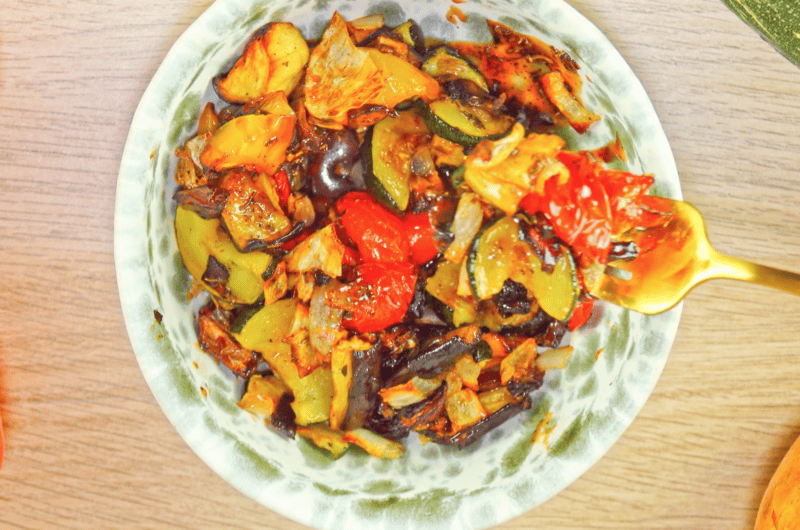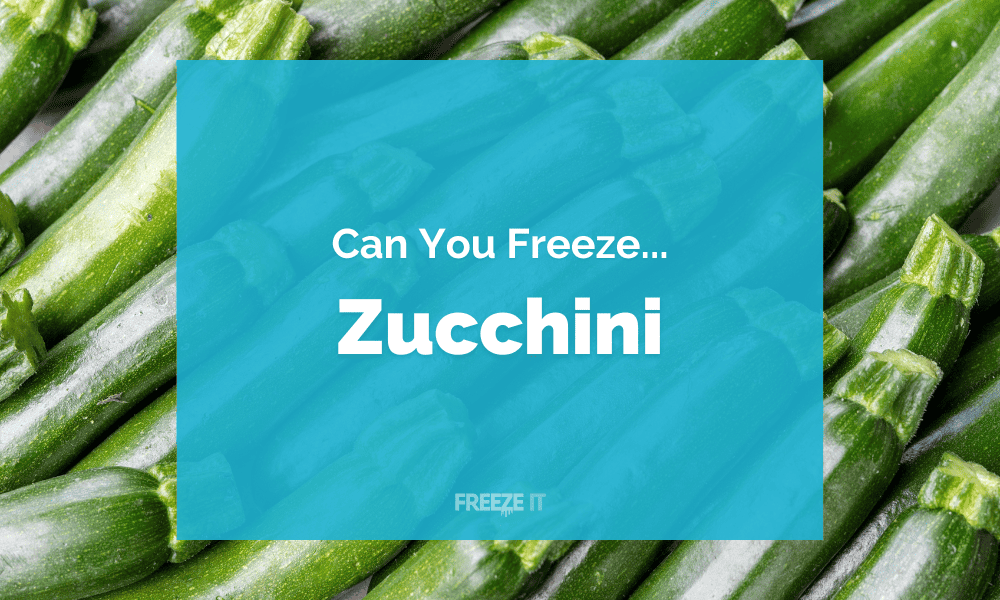Coated in mellow tartness with hints of molasses and fig, our Balsamic Glazed Roasted Vegetables are a stand-out side dish.
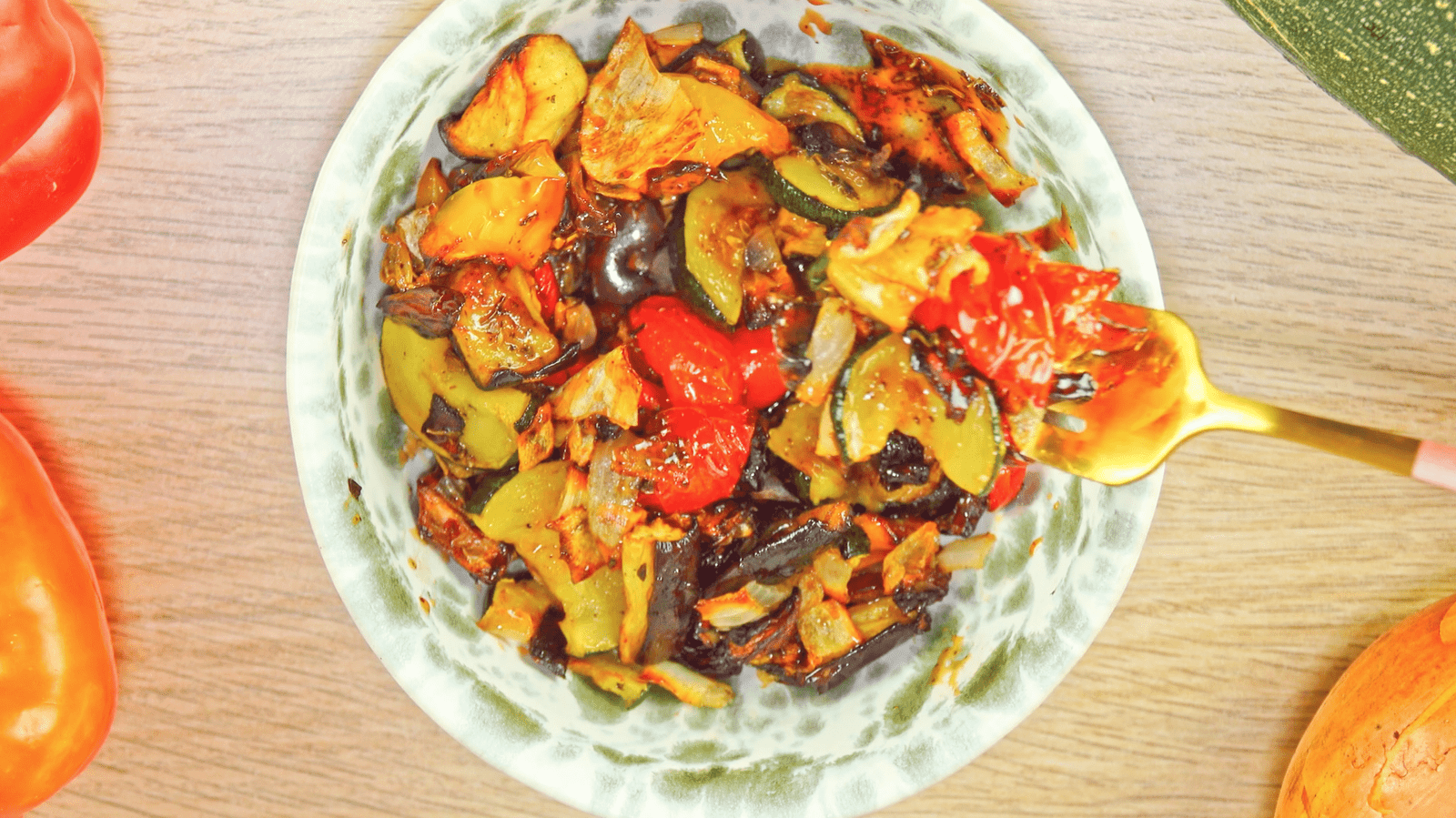
Balsamic vinegar is a dark, slightly sweet, and richly flavored vinegar used to enhance salad dressings, marinades, and sauces. It can be reduced to a glaze and drizzled over vegetables (like we’ll do here), strawberries, pizza, and pastas.
How to Make Balsamic Glazed Roasted Vegetables
A detailed recipe with full quantities can be found in the recipe card at the bottom of this page.
Step 1: Preheat your oven to 200°C or 180°C fan/convection (400°F or 350°F fan/convection). Cut your peppers, courgette, aubergine, onion, and mushrooms into bite-sized chunks. Line the baking tray with parchment paper.
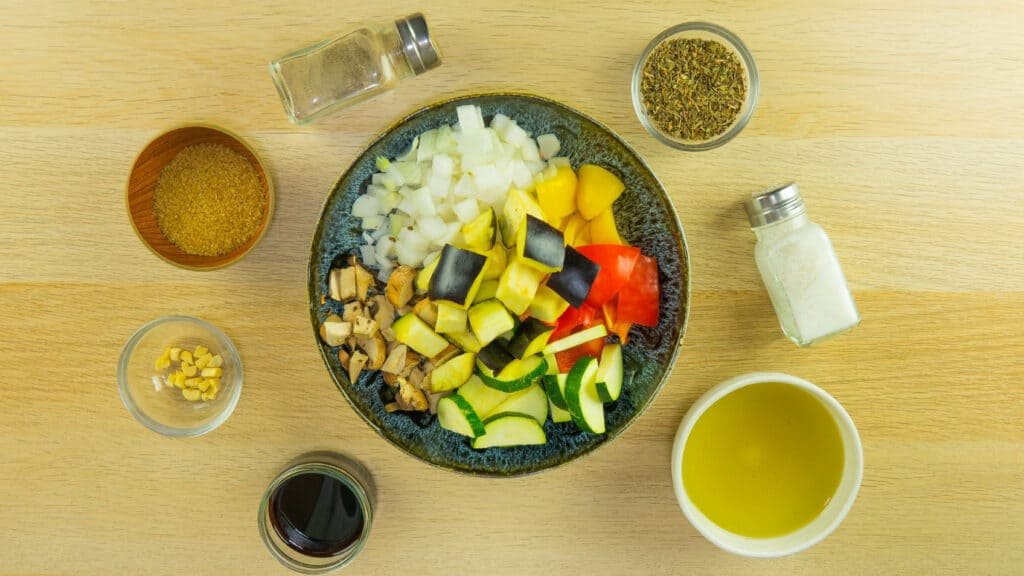
Step 2: Add the cut vegetables to a large mixing bowl. Toss with olive oil, salt, and pepper.
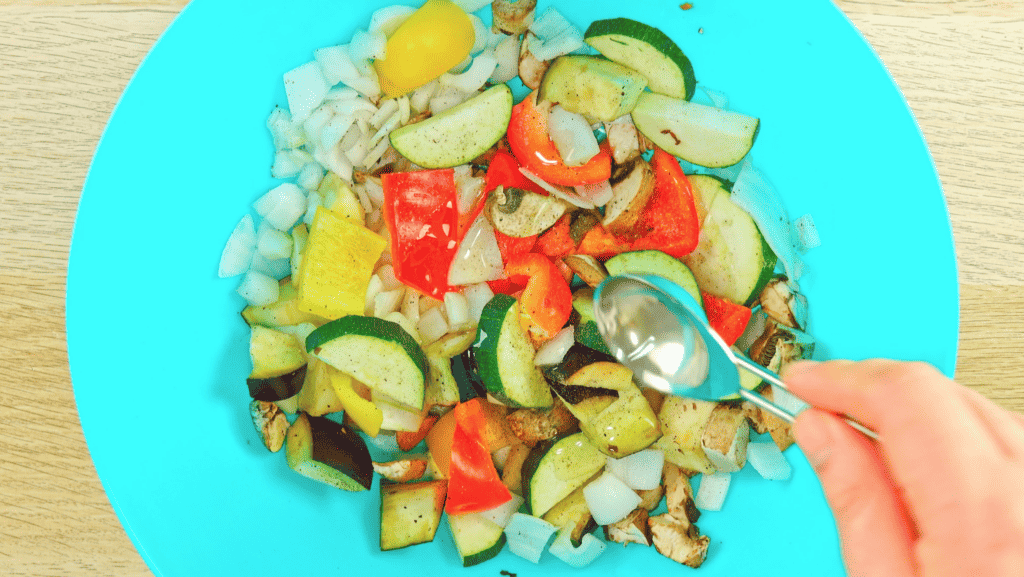
Step 3: Spread cut vegetables out in a single layer on a baking sheet lined with parchment paper.
Should You Thaw Frozen Vegetables Before Roasting?
No, you don’t have to. You can roast frozen veggies directly. However, it might take slightly longer compared to fresh veggies. Dusting off any excess ice crystals can prevent them from becoming soggy and is a great move.
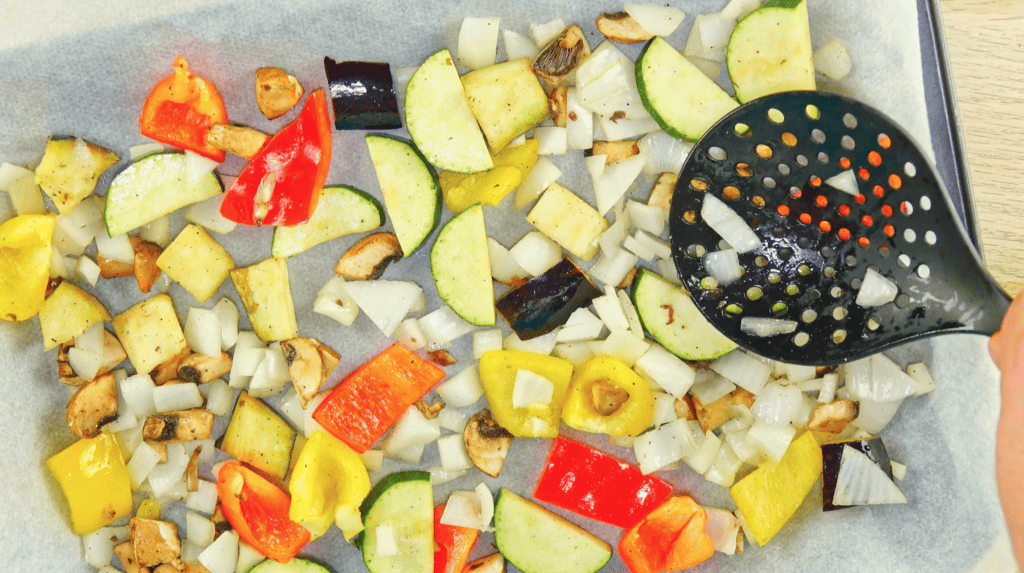
Step 4: Roast for 25-30 minutes, or until the vegetables are tender and slightly charred at the edges.
Step 5: While veggies are roasting, start the balsamic glaze. In a small saucepan, combine the balsamic vinegar, brown sugar, minced garlic, and dried thyme. Bring to a boil and then reduce the heat to a simmer. Continue cooking (stirring continuously) for 5-7 minutes, or until the mixture has reduced by half and thickened to a syrup-like consistency.
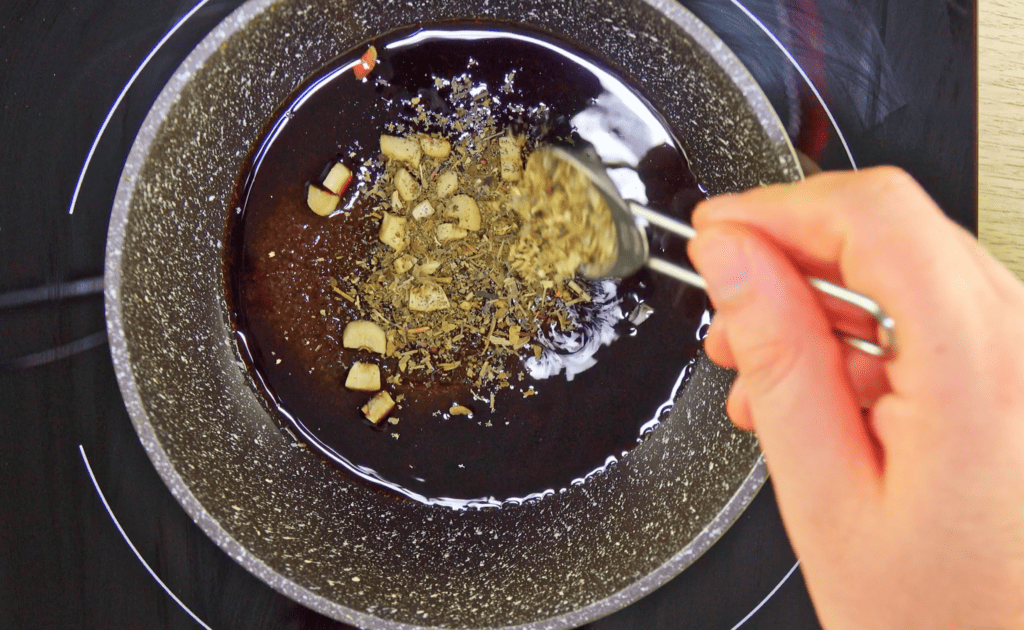
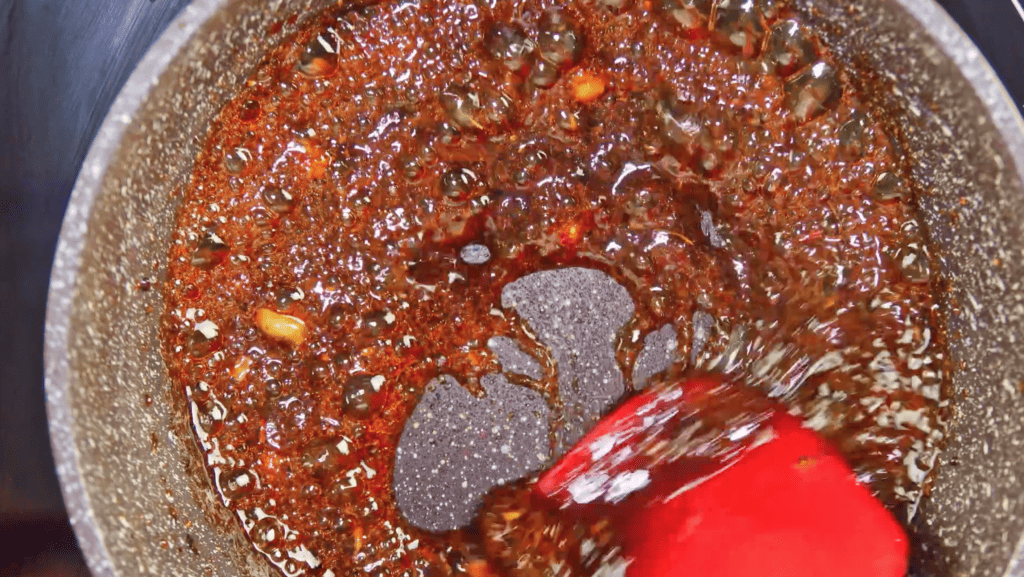
Step 6: When the vegetables have finished roasting, remove them from the oven and transfer them to a serving dish. Drizzle the balsamic glaze over the vegetables, tossing to coat them evenly.
Step 7: Plate and enjoy!
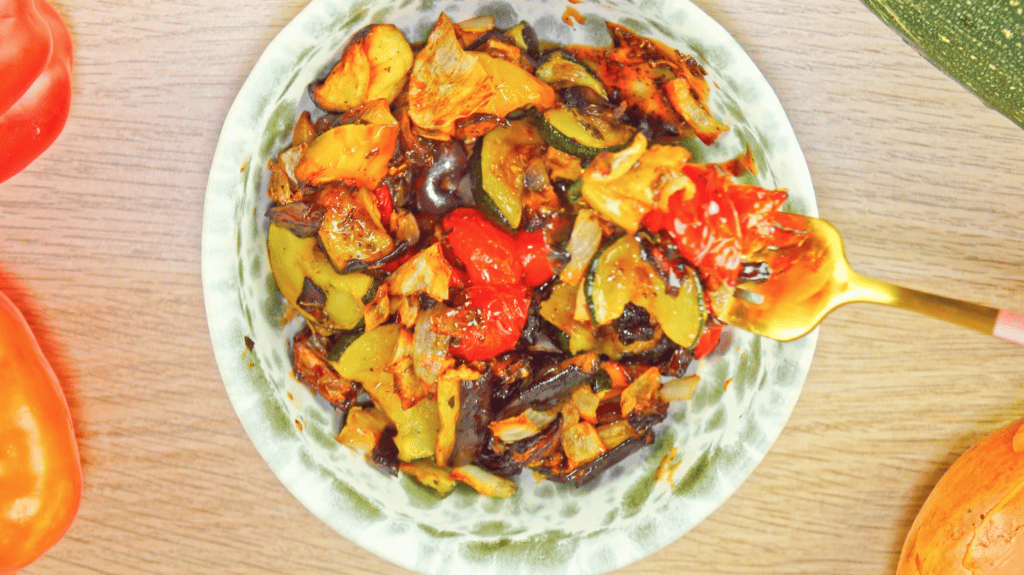
Tweaks
Need some inspiration on how to change it up a bit? Check out our suggestions below.
- Honey: Instead of (or in addition to) brown sugar, you can use honey to sweeten your glaze. Start with a tablespoon and adjust to your taste.
- Herb Mix: Try different herbs and spices to add more depth to the flavor. Consider adding smoked paprika or thyme to your vegetable mix.
- Citrus Zest: Adding some lemon zest (or orange zest) to the glaze can brighten up the flavors and provide a refreshing twist.
- Roasted Garlic: Rather than minced garlic, try using roasted garlic. Roasting the garlic mellows its flavor and adds a subtle sweetness. How do you do that? Simply drizzle a whole garlic head with olive oil, wrap it in foil, and roast it in the oven alongside the vegetables. Squeeze the softened cloves into the glaze.
- Variety of Vegetables: Experiment with other vegetable options like cherry tomatoes, asparagus, or sweet potatoes for added color and flavor variety.
Storage
Refrigerate: Transfer the vegetable to an airtight container after cooling. Safely store in the refrigerator for 3-4 days.
Freeze: Cool your balsamic glazed vegetables thoroughly. Place in a freezer-safe container (or bag), removing as much air as possible. Store frozen for up to 3 months.
Reheat: For best results, place in a preheated 190°C (375°F) oven for 8-10 minutes. Alternatively, you can use a microwave, but your vegetables may go a tad soggy and ruin the texture.
Yes. Generally, you can freeze food once raw and again once cooked. Which means it’s perfect for those zucchinis (courgettes) and eggplant (aubergine) you froze fresh earlier.

